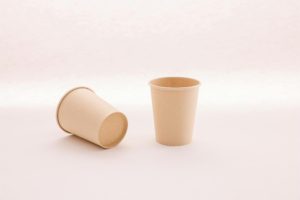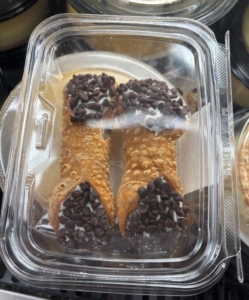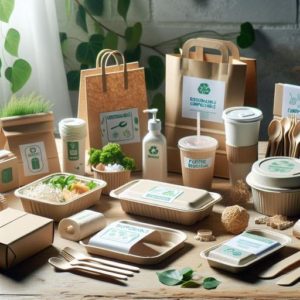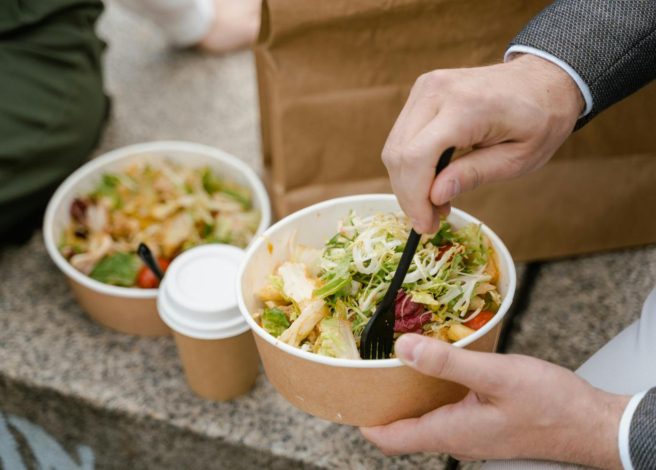Choosing between plastic and compostable packaging isn’t just about saving the planet, it could have a massive effect on your food business. Make the wrong call, and you’ll face rising costs, unhappy customers, or spoiled products. But get it right? You’ll be perfectly positioned to thrive today and dominate tomorrow. Before you decide, you need to understand the real story behind both options, because eco-friendly and business-friendly aren’t always served on the same plate.
There is so much information out there about packaging materials that it can feel overwhelming to attempt to distill it down. That’s where we step in. Here at Inline Plastics, we know plastic food packaging inside and out, with nearly 60 years of experience. We’ll share what we’ve learned about the pros and the cons of each option.
Let’s cut through the noise and hype. You need to know about material choices, costs, and their effects on your food business. Because spending your day Googling “Why did my container betray me?” isn’t anyone’s idea of running a successful food business.
Examining the Materials: Compostable and Plastic Packaging
 Before we dive into the numbers, let’s get clear on what we’re comparing. Traditional plastic packaging, like PET (polyethylene terephthalate — can you see why we use the acronym?), is made from fossil fuels and engineered for durability and clarity.
Before we dive into the numbers, let’s get clear on what we’re comparing. Traditional plastic packaging, like PET (polyethylene terephthalate — can you see why we use the acronym?), is made from fossil fuels and engineered for durability and clarity.
On the other side, compostable packaging is crafted from renewable resources like corn starch, sugarcane, or other plant-based materials that can break down naturally under the right conditions. A truly compostable package must break down just like leaves or food scraps — turning into water, CO2, and organic matter within a specific time frame. The end result should be safe, non-toxic compost that helps plants grow.
Most compostable packaging needs industrial composting facilities to break down properly, though some can decompose in home systems that’s ideal for food and beverage containers. Its low cost stems from years of streamlined production and established global supply chains. While compostable alternatives offer environmental benefits, their higher price point poses a significant challenge for food businesses operating on thin profit margins. For many companies, this cost differential isn’t just a number on a spreadsheet — it’s often the deciding factor between profitability and loss.
Performance and Reliability: How Do They Stack Up?
Plastic packaging excels in protecting food products across various conditions. Its moisture barrier and seal have been honed over decades of development. Food businesses value plastic. It keeps products fresh and extends their shelf life. This reduces waste and boosts profits.
Now, compostable packaging is the new kid on the block, and it’s getting better all the time. These materials are becoming tougher and can handle heat and moisture better than before. Sure, they might need a bit more careful handling — kind of like how you wouldn’t leave ice cream out in the sun. Each type of packaging has its own strengths, so it really comes down to what you’re trying to protect and how you plan to store and ship it. It’s worth taking time to figure out which option makes the most sense for your specific situation. 
Environmental Considerations of Plastic and Compostable Packaging
The environmental impact of plastic packaging remains its greatest weakness. Non-biodegradable plastic lasts for hundreds of years. Yet, plastic’s light weight means lower transport emissions. It also helps prevent food waste, giving some unrecognized environmental benefits.
Compostable packaging has clear end-of-life benefits. It breaks down into natural substances. Unlike plastics, it won’t persist in the environment if disposed of properly. Yet, this benefit depends heavily on proper disposal conditions. These materials may not degrade as intended without access to industrial composting facilities.
Imagine you have a compostable coffee cup. If you throw it in the regular trash instead of a compost bin, it ends up in a landfill. There, it breaks down without oxygen, producing methane, a harmful greenhouse gas. Additionally, the cup won’t enrich the soil as it would if composted correctly. Properly composting the cup ensures it breaks down as intended, benefiting the environment and reducing waste.
Compostable packaging can be contaminated by various “ride-along materials” like non-compostable plastic cutlery, stickers, labels, glass, metal, and PFAS chemicals. These contaminants prevent the packaging from meeting composting criteria and can compromise the quality and safety of the resulting compost. This is why many composting facilities are hesitant to accept compostable packaging, focusing instead on lawn trimmings and food waste.
Lastly, making compostable materials can use more energy and water than making plastic.
Let’s Talk Bioplastics
What if we could have the best of both worlds? A durable, trusted packaging material that can potentially degrade in a relatively short window of time?
Meet bioplastics: the overachieving cousin in the packaging family tree. Made from everything from corn starch to algae (yes, the stuff that makes pools green), these innovative materials don’t rely on fossil fuels. Think of them as plastic’s eco-conscious makeover.
 Here’s where it gets interesting: bioplastics aren’t a one-size-fits-all solution. Some are like conventional plastic’s plant-based twin. They’re just as tough but have a greener origin. Others are designed to break down naturally when their work is done. This split personality intrigues food businesses. They want to balance performance with eco-friendly practices.
Here’s where it gets interesting: bioplastics aren’t a one-size-fits-all solution. Some are like conventional plastic’s plant-based twin. They’re just as tough but have a greener origin. Others are designed to break down naturally when their work is done. This split personality intrigues food businesses. They want to balance performance with eco-friendly practices.
But before you jump on the bio bandwagon, here’s a reality check: “bio” doesn’t mean better. Bioplastics are promising, but they are often expensive. They also need special disposal methods to be eco-friendly. An example of these methods is industrial composting. Many bioplastics require the high temperatures and controlled conditions of industrial composting facilities to break down properly. These facilities can handle the specific needs of bioplastics, ensuring they decompose efficiently.
Also, not all bioplastics are actually compostable or biodegradable. Your choice ultimately depends on your needs, budget, and local disposal options. After all, even the greenest packaging isn’t so green if it ends up in the wrong place.
Supply Chain and Operations
Traditional plastic packaging runs on autopilot. It has reliable supply chains, simple storage needs, and easy handling. Your team knows the drill. It lets them focus on serving customers, not on packaging complexities.
While promising, compostable alternatives require more operational attention. Expect to build new supplier relationships, adjust storage protocols, and invest in staff training. While early supply challenges have improved, the switch demands careful planning and management. Nobody ever said change was easy!
Market & Consumer Perceptions: What Do They Think?
Consumer attitudes toward plastic and compostable packaging continue to evolve. While many prefer sustainable packaging, purchasing decisions often still prioritize price and convenience. Plastic packaging is familiar and accepted in many markets, but this may change as environmental considerations grow.
Compostable packaging can enhance brand image and appeal to environmentally conscious consumers. Some businesses say that compostable options boost customer loyalty and feedback. However, consumer understanding of proper disposal remains limited, potentially undermining the environmental benefits.
The Current Future Outlook
Enhancing and making the recycling infrastructure for PET food packaging more accessible is crucial to increasing post-consumer content. The low recycling rate for plastic packaging and the limited supply of recycled content are indeed due to contamination, the complexity of different plastics, and economic factors that make virgin plastics cheaper.
 Additionally, limited recycling infrastructure, supply chain challenges, and quality issues with recycled plastics further complicate the process. Making plastics go round and round requires more than wishful recycling.
Additionally, limited recycling infrastructure, supply chain challenges, and quality issues with recycled plastics further complicate the process. Making plastics go round and round requires more than wishful recycling.
These factors make it challenging to achieve a circular economy for plastics. As more recycled content becomes available, costs are expected to decrease, leading to an increase in recycled content in food packaging.
Compostable packaging technology is advancing. New materials now perform better and cost less. There is a need to expand industrial composting infrastructure to address current disposal challenges. However, the timeline for achieving cost parity with plastic remains uncertain.
The Right Packaging Choice for You
Ultimately, your packaging needs to work for your business, not just look good on paper. Beyond the eco-friendly buzzwords and trendy materials, there are practical concerns. Can it protect your food, survive delivery, and keep your profits healthy? Is recycling or proper disposal easily available to your customers? Are your customers fully aware of how to dispose of eco-friendly options properly?
Start small and test smart. Try new packaging for your forgiving products. Keep reliable solutions for the challenging ones. This lets you explore green options. You won’t risk your reputation or make delivery an extreme sport.
Remember: there’s no perfect solution. The best choice balances your specific needs — from keeping your famous sauce contained to protecting your bottom line. Just make sure whatever you pick keeps your food and your business future-proof.
Your success is what matters — even if that means recommending options outside our services. Reach out anytime with questions. We’re here to guide you.


